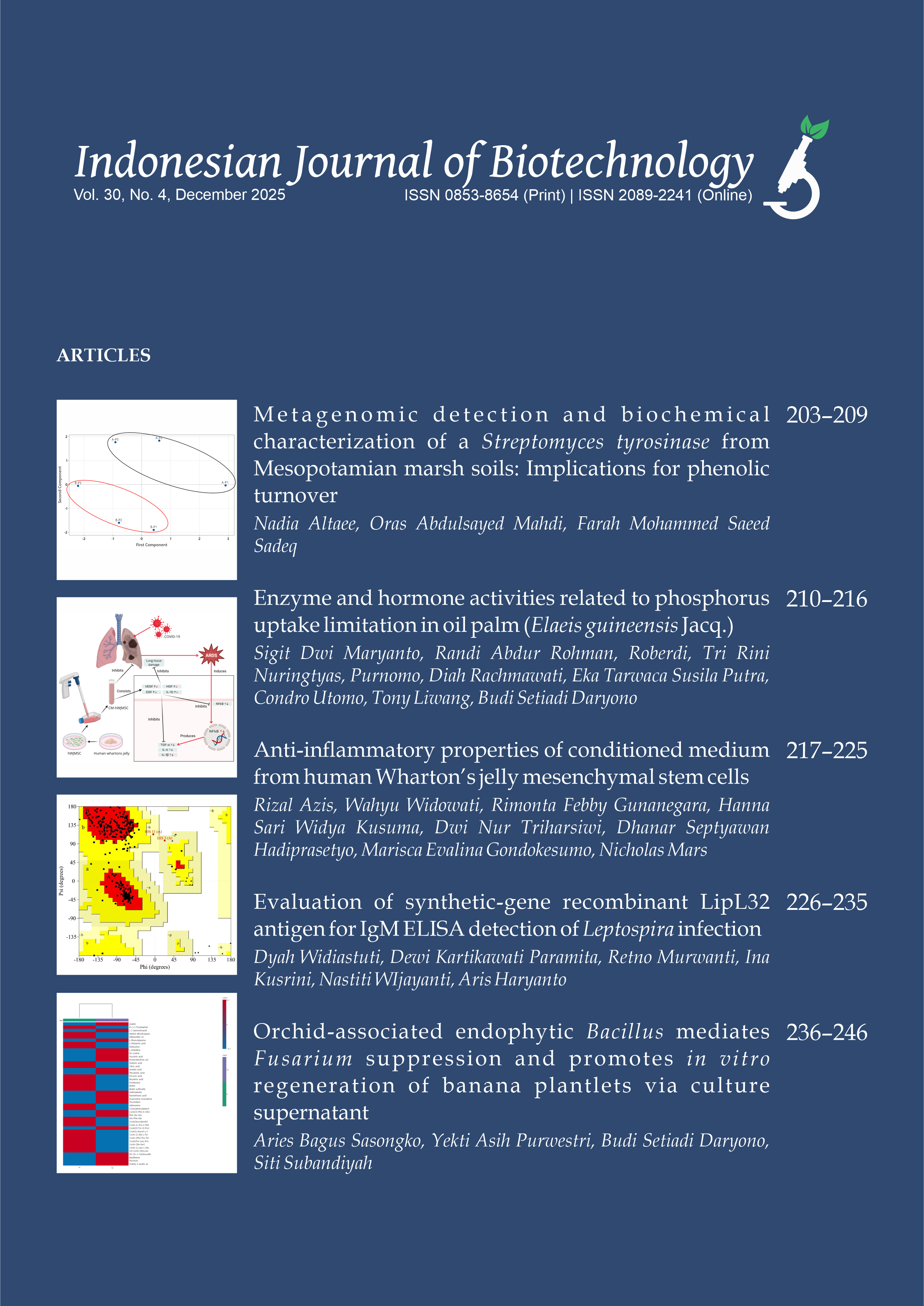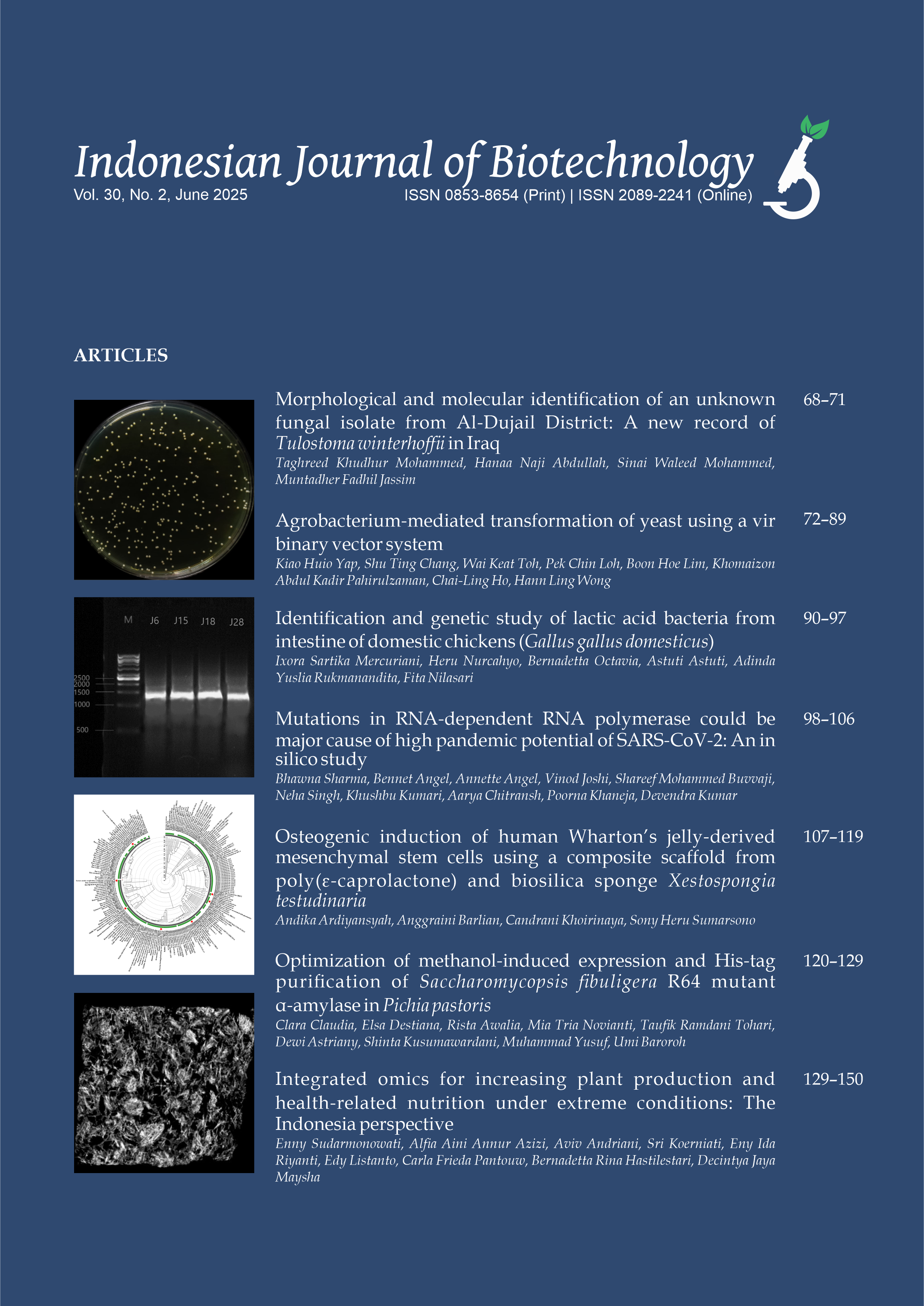Histological Features of Catecholaminergic Neuron in Substantia Nigra Induced by Paraquat Dichloride (1,1-dimethyl-4,4 bipyridinium) in Wistar Rat as A Model of Parkinson Disease
Tri Wahyu Pangestiningsih(1*), Woro Danur Wendo(2), Yulfia Nelymalik Selan(3), Filphin Adolfin Amalo(4), Nemay Anggadewi Ndaong(5), Victor Lenda(6)
(1)
(2)
(3)
(4)
(5)
(6)
(*) Corresponding Author
Abstract
Paraquat dichloride has been used by farmers as a herbicide to kill the grass. On the other hand, paraquat
dichloride is harmful if enters to the body, causing Parkinson’s disease, since it is disrupting dopamine
production in the substantia nigra pars compacta or dopamine pathways Nigro striatal pathway. The study
was done to fi nd out the histological changes of catecholaminergic neurons and Nigro striatal pathway caused
by paraquat dichloride treatment in Wistar rats as a model of Parkinson’s disease.
Twenty-two Wistar rats 3,5 months old were divided into 4 groups, 5 rats each. Group I (control group)
were injected with aquabidest, while groups II, III, and IV were injected intraperitoneally with paraquat
dichloride in aquabidest, with the dosage 5 , 10 and 15 mg/kg bw respectively. The rats were injected once
per week for 6 weeks. Three days after the last injection, the rats were anesthetized using xylasin (2 mg/kg)
and ketamine (20 mg/kg) intramuscularly, and then were intracardiac perfused using physiological saline as
prerinse solution, followed by 10% buffered formalin solution as a fi xative. After animals were fi xed, the brains
were removed and embedded in paraffi n block and cut in 12 μm thickness for immunohistochemistry staining
using tyrosine hydroxylase antibody. The results of staining then were observed under light microscope and
analyzed descriptively.
The results showed that the catecholaminergic neurons were distributed in the substantia nigra
pars compacta in all treatment groups, however, the cell density were found decreased only in group IV.
Catecholaminergic neurons appear in the bipolar and multipolar form, while dopamine ‘Nigro striatal pathway’
was found exist in all treatment groups. From our study, histologycally the decreased of catecholaminergic
neurons is only found in rats that received paraquat dichloride in dose 15 mg/kg bw for 6 weeks.
dichloride is harmful if enters to the body, causing Parkinson’s disease, since it is disrupting dopamine
production in the substantia nigra pars compacta or dopamine pathways Nigro striatal pathway. The study
was done to fi nd out the histological changes of catecholaminergic neurons and Nigro striatal pathway caused
by paraquat dichloride treatment in Wistar rats as a model of Parkinson’s disease.
Twenty-two Wistar rats 3,5 months old were divided into 4 groups, 5 rats each. Group I (control group)
were injected with aquabidest, while groups II, III, and IV were injected intraperitoneally with paraquat
dichloride in aquabidest, with the dosage 5 , 10 and 15 mg/kg bw respectively. The rats were injected once
per week for 6 weeks. Three days after the last injection, the rats were anesthetized using xylasin (2 mg/kg)
and ketamine (20 mg/kg) intramuscularly, and then were intracardiac perfused using physiological saline as
prerinse solution, followed by 10% buffered formalin solution as a fi xative. After animals were fi xed, the brains
were removed and embedded in paraffi n block and cut in 12 μm thickness for immunohistochemistry staining
using tyrosine hydroxylase antibody. The results of staining then were observed under light microscope and
analyzed descriptively.
The results showed that the catecholaminergic neurons were distributed in the substantia nigra
pars compacta in all treatment groups, however, the cell density were found decreased only in group IV.
Catecholaminergic neurons appear in the bipolar and multipolar form, while dopamine ‘Nigro striatal pathway’
was found exist in all treatment groups. From our study, histologycally the decreased of catecholaminergic
neurons is only found in rats that received paraquat dichloride in dose 15 mg/kg bw for 6 weeks.
Keywords
catecholaminergic neurons; paraquat dichloride; tyrosine hydroxylase; Parkinson’s disease
Full Text:
PDFArticle Metrics
Refbacks
- There are currently no refbacks.
Copyright (c) 2015 Tri Wahyu Pangestiningsih, Woro Danur Wendo, Yulfia Nelymalik Selan, Filphin Adolfin Amalo, Nemay Anggadewi Ndaong, Victor Lenda

This work is licensed under a Creative Commons Attribution-ShareAlike 4.0 International License.









